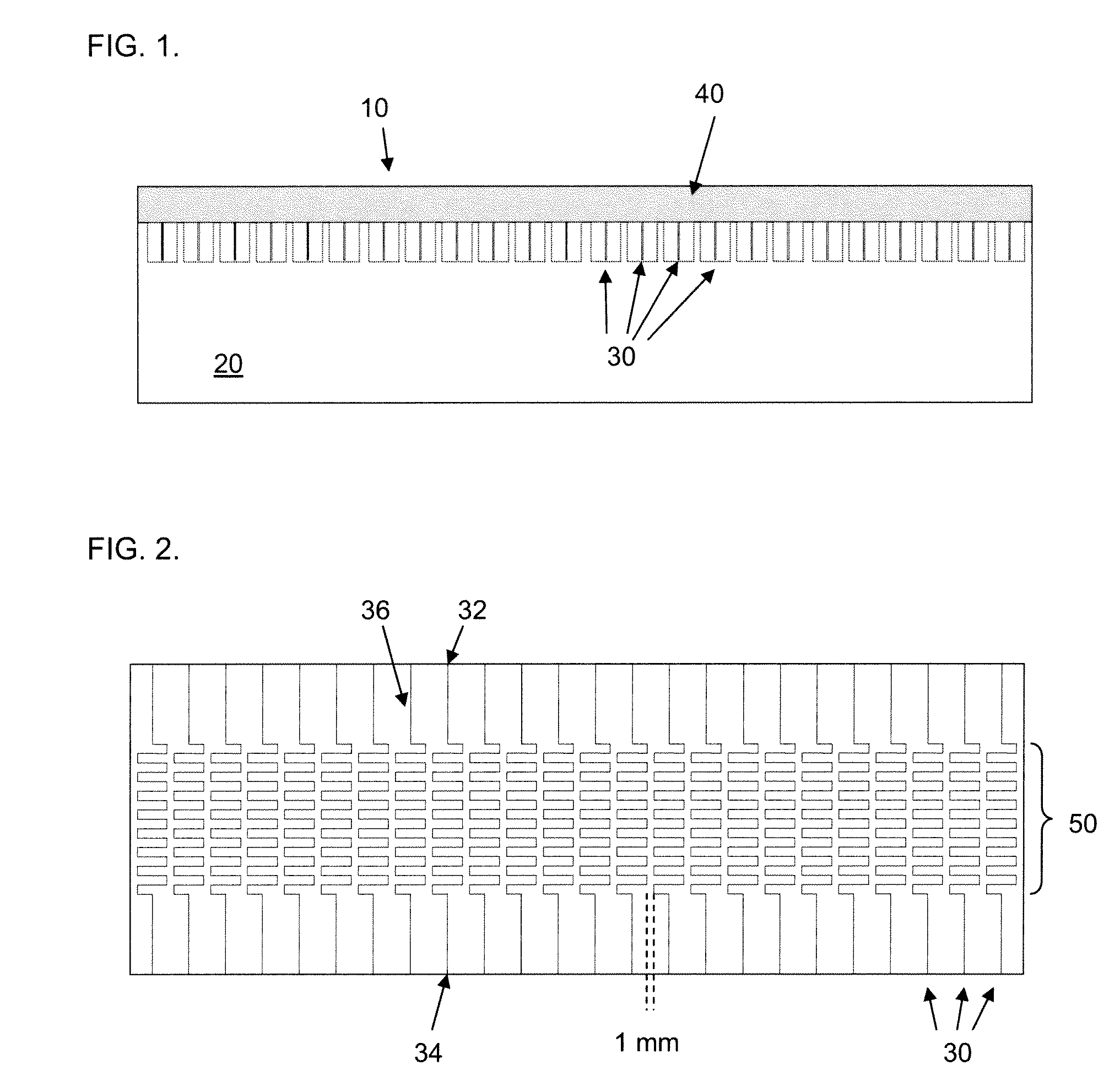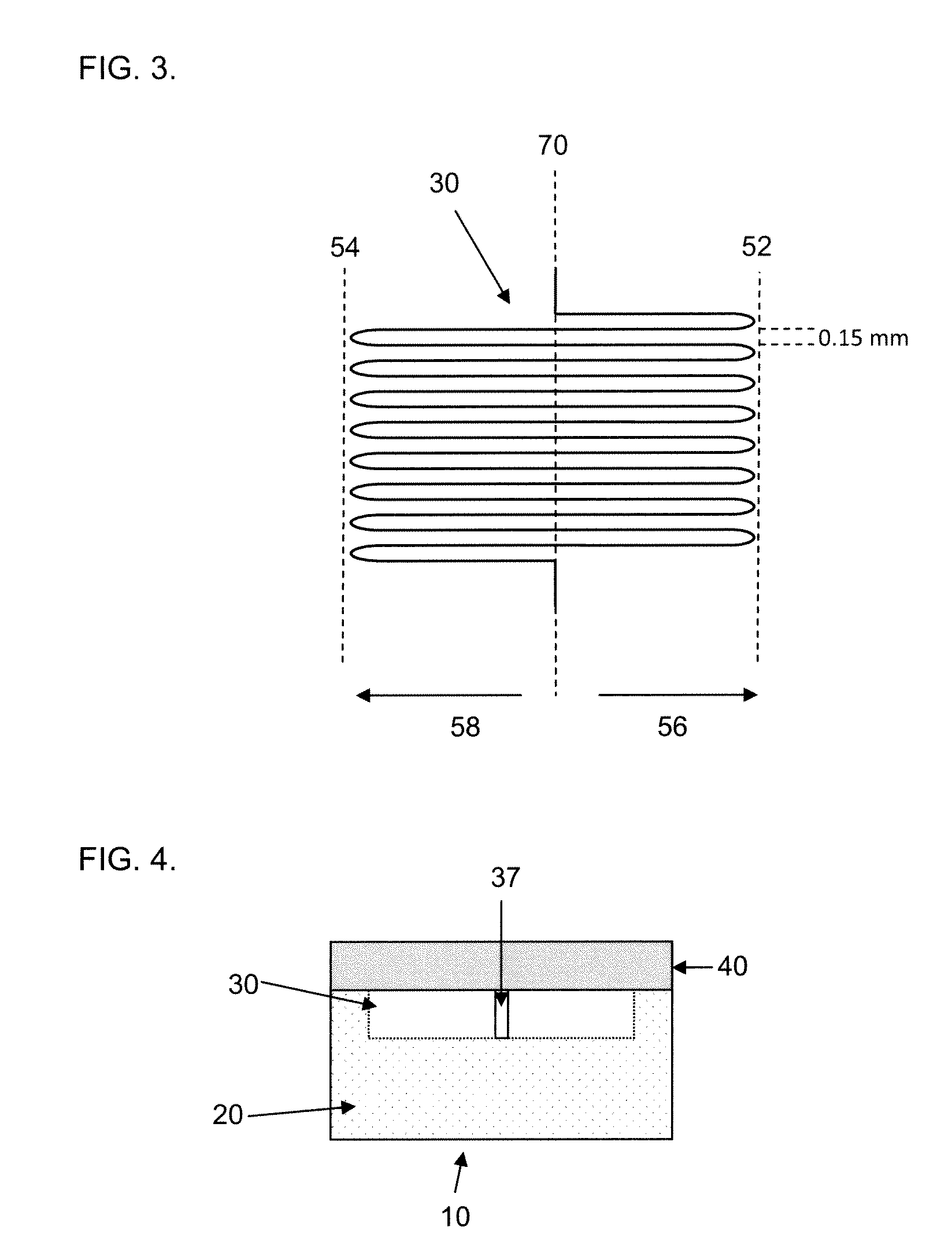Microfluidic chips for rapid multiplex elisa
a microfluidic chip and multiplex technology, applied in the field of devices, can solve the problems of expensive antibodies and reagents used in elisa, tedious and laborious protocol, and inability to perform one assay in a single day,
- Summary
- Abstract
- Description
- Claims
- Application Information
AI Technical Summary
Benefits of technology
Problems solved by technology
Method used
Image
Examples
example 1
[0091]Fabrication:
[0092]A microfluidic chip containing eight channels, each with three tortuous path sections, was fabricated using the following process. A photoresist mother mold (SU-8 100, Microchem) with the multichannel design was fabricated through a standard photolithographic process. Polydimethylsiloxane (PDMS) was prepared from Sylgard 184 silicon elastomer base and curing agent (Dow Corning Corporation, Midland, Mich.) at a 10:1 (w / w) ratio. After thorough mixing and degassing under vacuum for 30 min, the PDMS polymer was casted over the mother mold and cured in an oven at 70° C. for 1.5 to 2 hrs. The PDMS daughter mold was then used to produce poly(methyl methacrylate) (PMMA) multichannel chips through a hot micro-embossing process using a digitized hot press (Carver, Wabash, Ind.). Chips with circular or serpentine paths were fabricated.
[0093]The PMMA chips were functionalized with poly(ethyleneimine) (PEI; Mw 75,000, Sigma Chemicals, St. Louis, Mo.) to enhance surface b...
example 2
[0122]Human IgG was used to calibrate a multichannel chip. Known concentrations of 0, 2, 4, and 8 ng / mL were applied and the resulting fluorescence was measured. The results are shown in FIG. 23. A linear response was obtained. The results were highly reproducible and the assay could be completed in less than one hour.
[0123]For comparison, Table 4 compares the multichannel chip with a 384-well plate. The four washing steps (one between each step) are ignored. The multichannel chip takes less time and uses less material (reagent).
TABLE 4384-Well PlateIncubationMultichannel ChipTimeIncubation TimeStepAmount (μL)(min)Amount (μL)(min)1st Antibody25>1200.56Blocking25>1200.56Sample25>1200.562nd Antibody25>1200.56Substrate25>50.56Total125>4852.8
PUM
| Property | Measurement | Unit |
|---|---|---|
| length | aaaaa | aaaaa |
| length | aaaaa | aaaaa |
| length | aaaaa | aaaaa |
Abstract
Description
Claims
Application Information
 Login to View More
Login to View More - R&D
- Intellectual Property
- Life Sciences
- Materials
- Tech Scout
- Unparalleled Data Quality
- Higher Quality Content
- 60% Fewer Hallucinations
Browse by: Latest US Patents, China's latest patents, Technical Efficacy Thesaurus, Application Domain, Technology Topic, Popular Technical Reports.
© 2025 PatSnap. All rights reserved.Legal|Privacy policy|Modern Slavery Act Transparency Statement|Sitemap|About US| Contact US: help@patsnap.com



